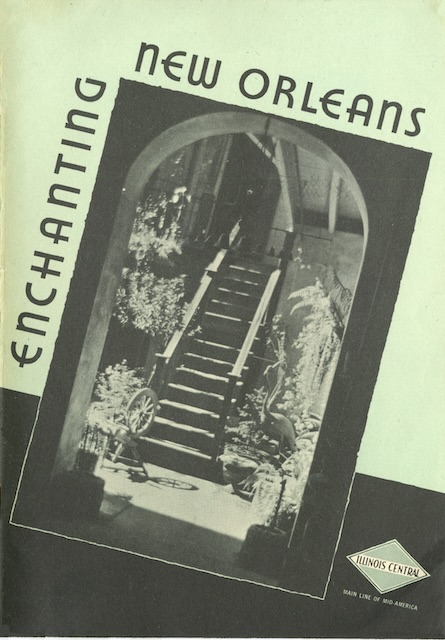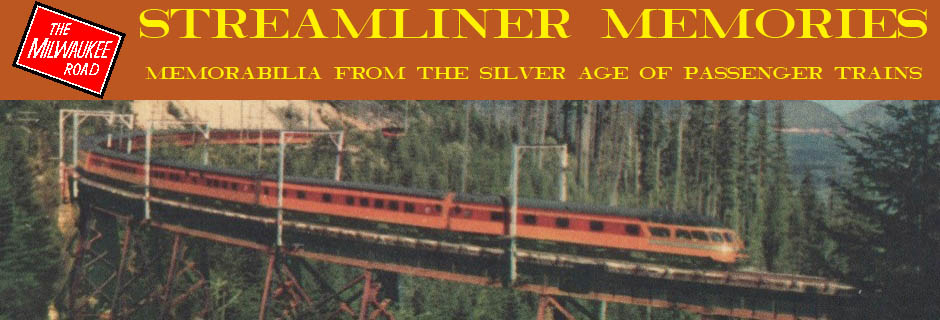Here is one more Illinois Central booklet about New Orleans from the Charles Medin collection. While it is possible he helped design this booklet, the only artworks are some borders as most of the booklet is photographs. If he did work on it, it was one of the last things he did before retiring in 1949.
 Click image to download a 10.6-MB PDF of this 24-page booklet.
Click image to download a 10.6-MB PDF of this 24-page booklet.
This booklet claims that the New Orleans of 1948 was both “romantically old” and “vigorously modern.” However, it says very little about what made New Orleans modern other than the port, the Huey P. Long Bridge (which isn’t in New Orleans), and Tulane Stadium (which the booklet called Municipal Stadium).
Instead, the booklet focused more on the romantically old. Although one chapter is called “New Orleans Today,” it begins by quoting the first two lines of a poem that was more than 88 years old when the booklet was published. Called “A Duel in New Orleans, in 1829,” the poem starts on page 275 of the 1860 book, Scenes in the South by James Creecy. Including the two lines in the booklet, plus ten more, the poem begins:
Have you ever been in New Orleans? If not, you’d better go,
Its a nation of a queer place; day and night a show!
Frenchmen, Spaniards, West Indians, Creoles, Mustees,
Yankees, Kentuckians, Tennesseans, lawyers and trustees,
Clergymen, priests, friars, nuns, women of all stains;
Negroes in purple and fine linen, and slaves in rags and chains.
Ships, arks, steamboats, robbers, pirates, alligators,
Assassins, gamblers, drunkards, and cotton speculators
Sailors, soldiers, pretty girls, and ugly fortune-tellers;
Pimps, imps, shrimps, and all sorts of dirty fellows;
White men with black wives, et vice-versa too.
A progeny of all colors —- an infernal motley crew!
Except, I hope, for the slavery and the duel that the poem eventually gets around to describing, this could be just as accurate a description of New Orleans in 2024 as in 1860 or 1948. Although the booklet did not intend to say so, it was the city’s tolerance of such diversity that made it so modern.
